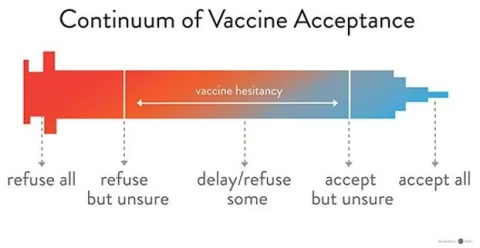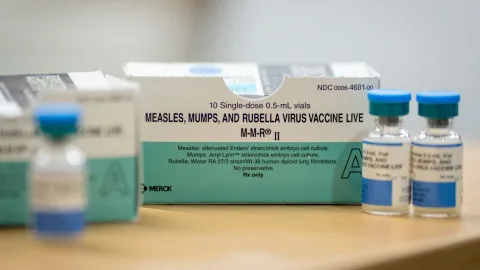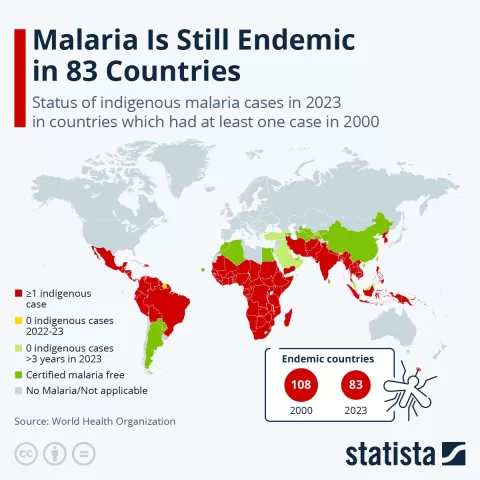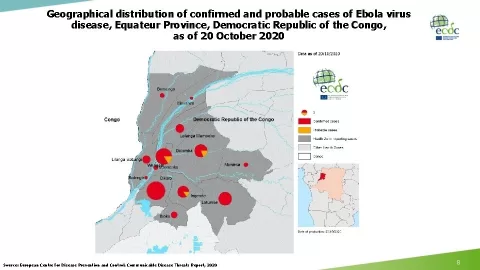In the latest food safety news, significant cuts by the U.S. Department of Agriculture (USDA) have stirred concern among experts and activists alike. The USDA’s decision to disband two long-standing food safety advisory committees raises alarms about the potential impacts on public health. Such advisory groups have historically provided crucial insights to prevent foodborne illnesses and ensure safe meat and poultry inspection processes. As the USDA potentially sidelines these advisory voices, experts warn this could endanger the food safety landscape in the United States. With rising global health threats like Lassa fever tracking and the recent malaria vaccine rollout in Uganda, the need for robust food safety oversight has never been clearer.
The recent developments in food safety have sparked a nationwide dialogue about the importance of regulatory oversight in protecting public health. As the USDA takes steps to dissolve essential advisory committees, concerns grow regarding the adequacy of food safety measures amidst rising health risks. The repercussions of these cuts extend beyond domestic food safety, echoing in discussions about global health challenges such as the tracking of Lassa fever in the UK and the introduction of a malaria vaccine in Uganda. As local and global health issues persist, it becomes increasingly vital to reconsider the frameworks governing food safety standards. The ongoing debates highlight the necessity for effective strategies to safeguard public health in an evolving landscape.
Understanding Recent US Food Safety Cuts
In a significant shift in food safety oversight, the US Department of Agriculture (USDA) has disbanded two long-standing food safety advisory committees, prompting concern among public health experts. The National Advisory Committee on Microbiological Criteria for Foods and the National Advisory Committee on Meat and Poultry Inspection, which had been integral in providing scientific guidance, will no longer operate. Experts like Brian Ronholm from Consumer Reports warn that this decision undermines the depth of scientific advice that has historically supported federal health initiatives aimed at safeguarding food supply integrity.
The impact of these cuts could be far-reaching, particularly regarding foodborne disease management. As experts continue to stress, the role of advisory committees is crucial in evaluating the safety of food production practices and influencing policy decisions. With USDA’s removal of these committees, there are rising fears that the effectiveness of food safety regulations may diminish, making it imperative for stakeholders to advocate for the reinstatement of these advisory bodies to ensure robust food safety measures.
Tracking Lassa Fever in the UK and Its Implications
The UK Health Security Agency’s recent actions to trace contacts of a visitor who came from Nigeria with Lassa fever underscore the importance of vigilance in monitoring infectious diseases. The disease, which can be transmitted through contact with contaminated materials, poses a relatively low risk of human-to-human transmission; however, the agency’s proactive measures reflect the increasing urgency to manage and contain outbreaks effectively. As Lassa fever remains endemic in parts of West Africa, such vigilance is essential for public health safety.
Moreover, the incident highlights the interconnectedness of global health and the necessity for countries to be prepared for potential outbreaks of infectious diseases. With reports suggesting an elevated risk in certain areas, the UK’s rapid response could serve as a model for other nations in managing public health threats. The monitoring of this particular case aligns with efforts by organizations and health bodies working on tracking diseases like malaria and influenza, ensuring that all infectious disease threats are handled with the seriousness they deserve.
Malaria Vaccine Rollout in Uganda: An Update
Uganda’s recent acquisition of over 2 million doses of a malaria vaccine represents a major leap forward in combating malaria, particularly in high-risk areas. This initiative is crucial as malaria continues to be a leading cause of morbidity and mortality in the region. With strategic implementation planned for children under two years old, this vaccine rollout could significantly reduce the childhood mortality rates associated with malaria, transforming public health in Uganda and setting a precedent for vaccine initiatives across Africa.
Furthermore, the collaboration between Gavi, the Vaccine Alliance, and the Ugandan government exemplifies the power of partnerships in public health. As more African countries prepare to introduce malaria vaccinations, the success of Uganda’s program could provide valuable insights for future vaccination campaigns. The anticipated increase in immunization coverage also aligns with global health goals to eradicate malaria, aligning local efforts with international public health objectives.
CDC’s New Tool for Vaccine Committee Transparency
The recent launch of a tool by the CDC to track conflicts of interest within its Advisory Committee on Immunization Practices is a significant step towards enhancing transparency in vaccine development processes. This tool enables the public to access detailed disclosures regarding the affiliations of committee members, ensuring that the decision-making process remains free from potential biases. With public trust in vaccines being essential, such measures affirm the integrity of the committee’s recommendations, particularly as they tackle pressing health issues like influenza and emerging diseases.
Moreover, this transparency setup serves as a critical component during vaccine seasons, where public scrutiny can be heightened, especially amidst discussions about flu vaccinations and emerging threats. Former CDC Director Tom Frieden emphasized the importance of such safeguards, noting that adherence to strict conflict of interest rules strengthens public confidence. The commitment to transparency not only reassures the public but also promotes more informed discussions around vaccination policies and their impact on public health.
Current Trends in Influenza Activity in the USA
Influenza activity in the United States has shown a notable decline over the past few weeks, yet healthcare systems continue to face significant pressures. With recent CDC data indicating hospitalizations due to flu reaching alarming levels, understanding the ongoing strain on healthcare resources is vital. The continued presence of influenza A, particularly the 2009 H1N1 strain, underscores the importance of ongoing influenza surveillance. As the flu season progresses, maintaining vigilance is crucial for both public health officials and healthcare providers.
Furthermore, the upward trend in outpatient visits and pediatric flu deaths draws attention to the increasing severity of this season compared to previous years. The CDC’s regular updates are instrumental in guiding both healthcare responses and public awareness initiatives, ensuring that communities remain informed about the risks associated with the virus. Moving forward, the concerted efforts of health agencies, supported by ongoing public health campaigns, will be crucial in managing flu outbreaks and mitigating their impact on vulnerable populations.
Low COVID Wastewater Levels Highlight Pandemic Progress
The recent stabilization of COVID-19 wastewater detections signifies an important milestone in the ongoing response to the pandemic. With levels dropping from moderate to low, public health officials can better assess the prevalence of SARS-CoV-2 in communities. The consistent monitoring of wastewater not only aids in tracking COVID-19 outbreak trends but also empowers local health authorities to implement targeted interventions. As such, these findings underscore the significance of data-driven approaches in managing infectious diseases.
Reducing COVID-19-related hospitalizations and deaths contributes to a growing sense of normalcy in healthcare settings. This progress reflects the effectiveness of vaccination campaigns and public health strategies that aim to reduce transmission rates. Continued focus on preventive measures will be essential to maintain control over COVID-19 and to prepare for potential future variants. Moving forward, maintaining public awareness around ongoing testing and vaccination options will be key to sustaining the progress achieved.
Global Efforts to Combat Polio: A Current Overview
The recent reports of polio cases from several nations, including Pakistan and Nigeria, remind health authorities of the ongoing need for stringent vaccination efforts. With Pakistan still grappling with endemic wild poliovirus, the urgency for effective immunization drives remains critical. The occurrence of circulating vaccine-derived poliovirus cases in Nigeria further highlights the complexities involved in eradicating polio globally. These developments necessitate continuous oversight and innovative strategies to reach underserved populations.
Moreover, global cooperation through initiatives like the Global Polio Eradication Initiative is essential to combat polio effectively. Timely interventions, such as vaccination campaigns and health education, can significantly change the trajectory of polio outbreaks. As these countries report new polio cases, the international community must continue to rally efforts, ensuring that resources are allocated effectively to mitigate the risk and prevent further transmission.
The Role of Public Health Agencies in Vaccine Development
Public health agencies, such as the CDC, play an essential role in the vaccine development process, particularly in assessing product safety and efficacy. With new vaccines emerging to combat diseases like influenza and malaria, public health agencies’ guidance and expertise shape vaccine deployment strategies. The involvement of diverse professionals ensures that recommendations are based on scientific evidence, highlighting the importance of collaborative research and innovative approaches to vaccination.
Additionally, the recent developments surrounding vaccines offer an opportunity to enhance public trust in vaccination programs. Engaging with communities to address concerns and disseminate information about vaccines can strengthen their acceptance and uptake. As agencies navigate the complexities of developing and monitoring vaccines, fostering transparent communication will be key to building a more resilient public health infrastructure.
Strategies for Enhancing Food Safety in the US
In light of the recent USDA food safety cuts, reconsidering strategies to enhance food safety becomes imperative. Emphasizing the role of scientific advisory committees is crucial in developing comprehensive food safety policies that protect public health. As foodborne illnesses continue to pose significant risks, a call for reinstating expert panels and fostering collaboration among stakeholders is vital. Lessons learned from past food safety incidents should guide the establishment of robust frameworks that prioritize consumer safety and bolster regulatory oversight.
Moreover, implementing modern technological solutions can aid in tracking and mitigating foodborne disease outbreaks. Data analytics, enhanced surveillance systems, and public engagement through food safety education can empower consumers to make informed choices. By investing in these strategies and advocating for a more transparent food safety framework, the US can ensure that public health remains at the forefront of food safety policy.
Frequently Asked Questions
What are the implications of the USDA food safety cuts on public health?
The recent USDA food safety cuts, which eliminated two key advisory committees, have raised concerns among public health experts about the potential impact on food safety practices and regulatory oversight. These committees, historically instrumental in providing scientific advice to health agencies, played a crucial role in guiding safe food policies. The removal of their expertise could lead to gaps in foodborne disease prevention efforts.
How does Lassa fever relate to food safety news in the UK?
Lassa fever, tracked by UK health officials, highlights a critical aspect of food safety. This viral disease, endemic in some African regions, can be transmitted through food contaminated with urine or feces from infected rodents. The recent case in the UK emphasizes the importance of stringent food safety measures and awareness to prevent potential outbreaks linked to imported foods.
What role does the malaria vaccine in Uganda play in public health strategies related to food safety?
While primarily focused on malaria control, the introduction of the malaria vaccine in Uganda reflects broader public health strategies that intertwine with food safety. Improved public health outcomes, such as reducing malaria prevalence through vaccination, can bolster community health, leading to decreased foodborne illness incidents as healthier populations can better respond to food safety challenges.
How does the CDC vaccine committee tool enhance food safety measures indirectly?
The CDC vaccine committee tool enhances transparency in vaccine administration by tracking potential conflicts of interest among committee members. While it may seem unrelated to food safety, robust vaccination programs reduce the risk of foodborne disease spread by preventing infectious disease outbreaks. Improved public confidence in vaccines supports broader public health strategies, including food safety initiatives.
What is the current state of influenza activity in the USA and its relation to food safety?
As influenza activity in the USA has decreased, there remains a significant impact on healthcare systems. The increased hospitalizations and fatalities due to influenza can divert resources from food safety inspections and responses. Thus, ensuring a balanced focus on both influenza control and food safety remains crucial in maintaining overall public health.
| News Source | Key Point | Impact |
|---|---|---|
| Food Safety News | USDA eliminates food safety advisory committees | Risks loss of scientific guidance for food safety policies. |
| UK Health Security Agency | Tracing contacts of Lassa fever patient | Public risk remains low for Lassa fever outbreak. |
| Gavi & Uganda Health Ministry | Introduction of malaria vaccine in Uganda | Aims to protect children in high-risk areas. |
| CDC | New tool to track vaccine advisory committee conflicts | Enhances transparency in public health decision-making. |
| CDC | Flu activity decreases but high severity continues | Continued strain on healthcare despite declining rates. |
| Global Polio Eradication Initiative | Five countries report new polio cases | Indicates ongoing challenges in eradicating polio. |
Summary
Food safety news highlights the recent decision by the USDA to eliminate two vital advisory committees, raising concerns about the potential loss of scientific guidance in food safety. In response to emerging health threats, the UK is actively tracing contacts related to a Lassa fever case, while Uganda gears up for a nationwide initiative to administer malaria vaccinations to protect its vulnerable populations. As the CDC implements tools for greater transparency in vaccine advisory committees, the ongoing decrease in flu activity signals hope, though its impact on healthcare remains substantial. This landscape underscores the importance of vigilance and proactive measures in public health to ensure food safety and disease prevention.
The content provided on this blog (e.g., symptom descriptions, health tips, or general advice) is for informational purposes only and is not a substitute for professional medical advice, diagnosis, or treatment. Always seek the guidance of your physician or other qualified healthcare provider with any questions you may have regarding a medical condition. Never disregard professional medical advice or delay seeking it because of something you have read on this website. If you believe you may have a medical emergency, call your doctor or emergency services immediately. Reliance on any information provided by this blog is solely at your own risk.








